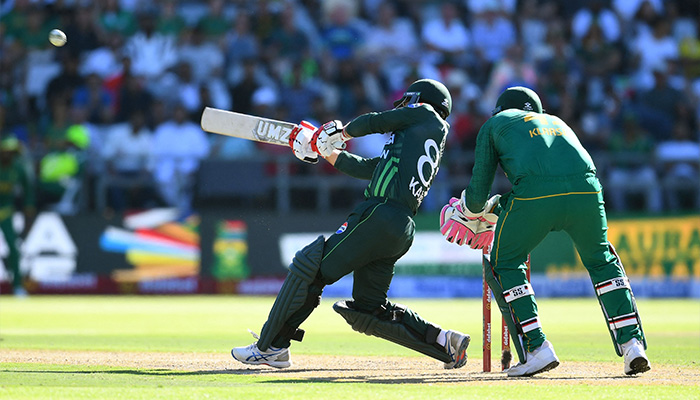Business
Global value added by agriculture, forestry and fishing grows 89pc by 2022
字号+ Author:Smart News Source:Health 2025-01-13 07:48:04 I want to comment(0)
ISLAMABAD: The global value by agriculture, forestry and fishing grew by 89 per cent in real terms between 2000 and 2022, reaching $3.8 trillion in 2022, according to an FAO report. Given its size, Asia was the main contributor to global agriculture, forestry and fishing value-added with 6pc of the world total in 2022: the continent’s value added more than doubled from $1.2tr in 2000 to $2.5tr in 2022, according to the World Food and Agriculture — Statistics Yearbook 2024, released on Friday. The global contribution of agriculture to GDP declined marginally between 2000 and 2019. This is an expected consequence of the growth of total GDP. Due to the Covid-19 pandemic and the various restrictions put in place to contain it in 2020, the value added by the industry and services sectors declined while that of agriculture kept increasing, resulting in an artificial jump of the share of agriculture in the total in 2020. In 2022, the global agricultural land area was 4.78 billion hectares (ha), down 2pc, or 0.09 billion hectares, compared with 2000 and between 2000 and 2022, and roughly two-thirds of agricultural land was used for permanent meadows and pastures (3.21bn ha in 2022, down 5pc, or 0.17bn ha from 2000). One-third of the total agricultural land was cropland (1.57bn ha in 2022, up 5pc, or 0.08bn ha from 2000). Cropland area per capita declines as population outpaces agricultural growth Cropland area per capita decreased in all regions between 2000 and 2022 as population increased faster than the cropland area. The world average was declined by 19 percent, reaching 0.20 ha per capita in 2022. Other reasons for high values of cropland area per capita include the intense use of agricultural inputs and dependencies on agricultural imports or food aid. The development of irrigation is one aspect of agriculture intensification that has allowed total production to grow much faster than the cultivated area. The yearbook says the global land area equipped for irrigation reached 354m ha in 2022, an increase of 22pc from the 289m ha of 2000 and more than twice the land area equipped for irrigation in the 1960s. The vast majority is located in Asia (70pc), where irrigation was a key component of the green revolution. The share of the area equipped for irrigation in cropland area increased to 22.5pc in 2022, up 3.1 percentage points compared with 2000. The higher levels in Asia compared to the rest of the world are partly attributable to the prevalence of irrigation-intensive rice cultivation in the region. Countries with low shares of equipped area for irrigation are more dependent on rain-fed agriculture, which tends to be overall more extensive than irrigated agriculture and is affected by changing rain patterns. The number of people working in agriculture worldwide, including forestry and fishing, went down 13pc between 2000 and 2022, reaching 892m in 2022, or 133m less than in 2000. Employment in agriculture declined between 2000 and 2019 (to 863m). Employment in agriculture declined between 2000 and 2019 to 863m. The Covid-19 pandemic reversed this long-term decline, as people went back to rural areas and entered into agricultural work, especially in Africa and Asia, resulting in an increase of 5m workers between 2019 and 2020. Between 2000 and 2022, agricultural employment has declined from 786m people to 592m in Asia: this means that more than one out of every four agricultural workers has left the sector for another job outside agriculture in the region. Global pesticide use increased between 2000 and 2022 by 70pc to 3.7m tonnes in 2022. Most of this increase took place between 2000 and 2016, with a small decline until 2018 and renewed growth afterwards. Total agricultural use of inorganic fertilisers, expressed as the sum of the three nutrients nitrogen, phosphorus and potassium, was 185m tonnes in 2022, down 7pc compared with 2021. The decrease is mainly due to significantly higher fertiliser prices linked with higher natural gas prices and conflict-related supply chain disruptions. Asia represented 55pc of world total agricultural use of inorganic fertilisers in 2022, followed by the Americas (28pc), Europe (11pc), Africa (4pc) and Oceania (2pc). This ranking of the regions is the same for all nutrients.
1.This site adheres to industry standards, and any reposted articles will clearly indicate the author and source;
 Related Articles
Related Articles-
Nvidia’s powers
2025-01-13 07:45
-
میلبورن میں چائے کے وقفے کے بعد آسٹریلیا نے سات وکٹیں لے کر بھارت کو شکست دی
2025-01-13 07:32
-
بھارت کی چیمپئنز ٹرافی کی مانگ سے کرکٹ کی سالمیت کو نقصان پہنچا
2025-01-13 07:26
-
پاکستان بمقابلہ جنوبی افریقہ: گرین شرٹس کے تین کھلاڑیوں کے آؤٹ ہونے کے بعد پروٹیز نے کمان سنبھال لی
2025-01-13 07:15
 User Reviews
User Reviews Recommended Reads
Recommended Reads Hot Information
Hot Information- Global wellness industry
- پی ایس ایل 10: کھلاڑیوں کی ڈرافٹ کی ترتیب کا اعلان کر دیا گیا۔
- بھارت کی چیمپئنز ٹرافی کی مانگ سے کرکٹ کی سالمیت کو نقصان پہنچا
- پی ایس ایل 10: کھلاڑیوں کی ڈرافٹ کی ترتیب کا اعلان کر دیا گیا۔
- Australian authors give every MP five books on Israel, Palestine and Lebanon
- ویرات کوہلی پر کانستاس کو کندھے سے دھکیلنے پر جرمانہ اور آن لائن تنقید کا سامنا ہے۔
- آئی سی سی نے چیمپئنز ٹرافی 2025 کے میچوں اور گروپس کا اعلان کردیا
- نیوکاسل کے اساک اور جوئلینٹون نے مانچسٹر یونائیٹڈ کو مسلسل چوتھی شکست سے دوچار کیا۔
- Past and future
 Abont US
Abont US
Follow our WhatasApp account to stay updated with the latest exciting content












